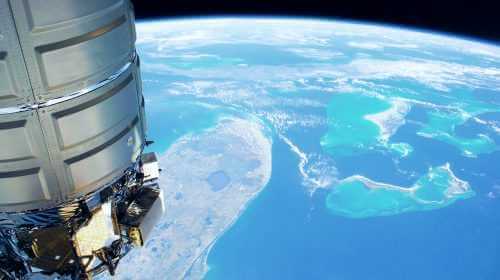Jun 24, 2018
Almost all satellite based broadband communication today takes place between a GEO satellite and one or more teleports or earth stations, within its footprint below. The next generation of LEO (Low Earth Orbit) constellations being developed and deployed will not be fixed in orbit, as GEO satellites are, high above the equator. These low flying satellites must orbit the earth at a fast rate, or fall into its gravity well, and burn up. This means these satellites will pass quickly over earth stations, rather than be permanently stationed above them, raising the question of how will these satellites continue to provide uninterrupted communications between users and earth stations and teleports, if they are not permanently stationed above them.
LEO Satellites
Typically, LEO satellites have been used for earth observation, and similar applications, where they gather large amounts of content, usually imaging, and then download it when they pass over an earth station below. This creates an undesirable delay, and is not tenable for broadband LEO satellites under development. Ideally, traffic would be passed from one satellite to another, finding the best and fastest path to a teleport below. How would this best be achieved?
Fiber Optics in the Sky
The SpaceDataHighway, provides a big step towards conquering this issue. It can be thought of as fiber optics in the sky that consists of leading-edge laser technology. Frequencies normally used by satellites to communicate with the ground would create interference if they were directed to other satellites in order to facilitate passing traffic from one satellite to another, for the purpose of relaying data to a ground station below. Laser links operate as a directed and tightly focused beam, as compared with other satellite frequencies that tend to cover a large area. The trick is to establish what amounts to optical fiber links, on the fly, between moving satellites using lasers. The SpaceDataHighway has moved the ball forward significantly.

How it Works
A joint public-private partnership between the ESA (European Space Agency) and Airbus, the SpaceDataHighway is currently designed to support earth observation satellites in low earth orbit. The solution still involves GEO satellites, but it’s a big step. Satellites placed in geostationary (GEO) orbits, lock on to fast-moving LEO satellites below, gather the large volumes of content, and relay it down to earth in near-real time, at speeds up to 1.8 Gbps. Instead of gathering images and other content and holding it until the LEO satellite is over an earth station, its traffic is quickly passed to a GEO satellite via laser, and then transmitted to the ground using standard satellite communication frequencies. Technical challenges involve establishing and maintaining links between a fixed satellite and moving spacecraft. It works.
The SpaceDataHighway Mission Operation Centre operates 24 hours per day, seven days per week, establishing laser connections between the GEO and LEO satellites. Customers place requests for transmissions to operators who program the space and ground segments, and monitor the performance of communications. 2017 was a year of ramp-up for the system, which now supports more than 1000 connections per month with a high (99.8%) level of reliability. The SpaceDataHighway solution currently transfers the equivalent of 100 million MP3 music files, but its capacity is much greater. It is able to relay up to 40 terabytes of earth observation satellite and UAV (Unmanned Arial Vehicles) data daily. The available capacity will support significant continued growth.
Future Plans
Today there is one GEO relay satellite covering the American east coast to India. A second to be launched in 2019 will double capacity, extend the coverage and provide redundancy. In 2019 The SpaceDataHighway will begin to relay traffic from the Columbus module of the ISS (International Space Station), and shortly thereafter will begin support for the Pleiades Neo Constellation of next generation earth observation satellites. While the SpaceDataHighway is primarily designed to support earth observation and UAV content transmission in near-real time, the lessons learned and technologies developed will contribute to similar technology that will be used to interconnect LEO satellites that provide consumer broadband and enterprise backhaul services in the years ahead.





